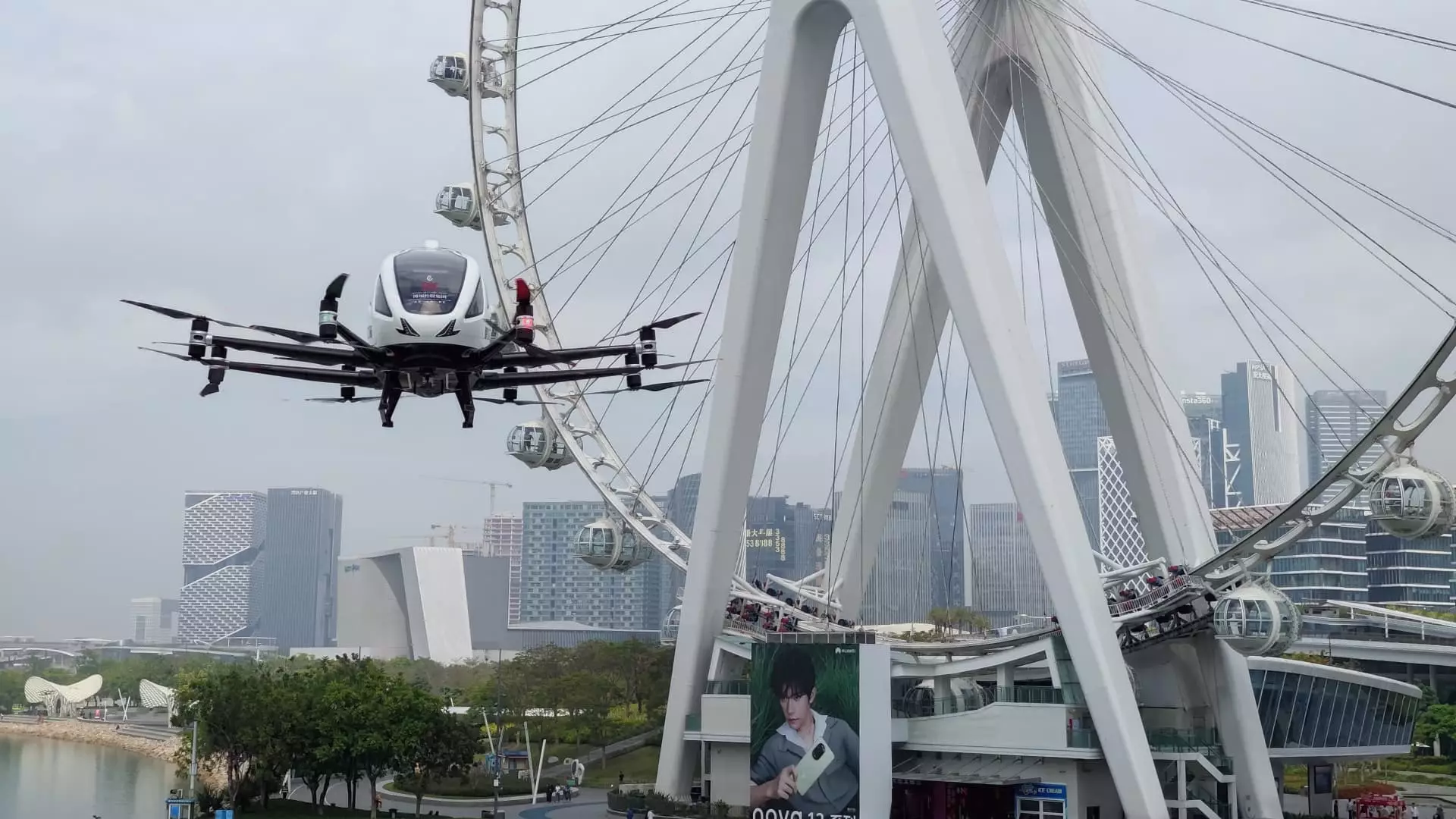With the world on the brink of a transportation revolution, China’s Ehang is leading the way in the eVTOL (electric Vertical Take-Off and Landing) industry. Unlike its global competitors, which are still stuck in the bureaucratic mire of regulatory approval in their respective countries, Ehang has already achieved significant milestones. It’s astounding to consider that as we hover on the edge of an age where human flight becomes as routine as riding a taxi, a single Chinese firm holds the only certification for carrying passengers. This article will explore the implications of Ehang’s pioneering achievements and the surrounding market dynamics.
Regulatory Successes: A Gateway for Ehang
In March 2023, Ehang received the long-sought certification from China’s Civil Aviation Administration for its 216-S model. This achievement positions the company uniquely in a sector where regulatory barriers are often insurmountable. While competitors like Joby Aviation and Archer are still navigating U.S. regulatory waters, Ehang is set to commence commercial operations by June 2023. With projections indicating a market share of 100% in China from 2025 to 2027, Ehang isn’t just participating in this burgeoning industry; it’s defining it.
To put this into perspective, the barriers to entry can’t be overstated. Bank of America acknowledged that the rigorous certification process serves as a daunting hurdle for new entrants. Hence, Ehang’s existing market capture becomes increasingly significant. In a competitive environment stifled by regulatory scrutiny, can U.S. counterparts truly hope to compete? The odds appear stacked against them, fostering an environment that further isolates the American eVTOL market.
The Government’s Role: The Low-Altitude Economy
What plays into Ehang’s favor even more is the Chinese government’s commitment to fostering a “low-altitude economy.” With over 300 local governments publicly backing projects that include eVTOL infrastructure, the government is signaling this sector as a strategic priority for national growth. Investment and subsidies underscore the importance the government places on these advancements. In stark contrast, U.S. entities appear to lack such aggressive state backing, resulting in a potentially lopsided race toward aerial taxi implementation.
Moreover, the notion of drones for food and supply delivery, especially to remote tourist sites, illustrates a multifaceted approach to the low-altitude economy. Such initiatives are not only practical but also resonate with a society increasingly leaning toward innovative transportation solutions.
Market Dynamics: A Bright Future Ahead
Analyzing Ehang’s growth trajectory, it’s clear that its performance won’t just benefit the company; the entire eVTOL sector could be reshaped by its success. Bank of America predicts that Ehang’s delivery volumes will soar, with estimates of 442 units this year and 813 next year. That translates into astonishing revenue growth of 103% in 2025 and 82% in 2026, which is nothing short of breathtaking.
With each tourist destination expected to procure five to ten eVTOLs, the potential market in China alone could reach a staggering 80,000 units. Imagine the implications of such widespread adoption. Ehang may not only lead but could potentially dominate the global market, given its lead in regulatory approval and market penetration.
While tourism may initially drive demand, there’s an undeniable buzz surrounding the burgeoning air taxi market. Bank of America estimates that the total demand for eVTOL air taxis could finally reach 200,000 units by 2035. This indicates a significant pivot in urban transportation paradigms as chemical combustion vehicles make way for more efficient, aerial alternatives. It’s a profit-driven incentive guaranteed to stimulate economic growth in various sectors.
Challenges Await: The Reality of Operational Risks
While Ehang’s prospects are indeed bright, challenges loom large on the horizon. The analysts at Bank of America highlight that any accidents or incidents involving passengers could jeopardize the company’s reputation, leading to significant legal ramifications. Trust is essential in this nascent industry, and one mishap could be catastrophic.
Therefore, while the financial projections are impressive, there are tremendous risks tied to public perception and safety regulations—especially as the industry gears up for mass adoption. Will Ehang’s emphasis on rigorous safety protocols allow it to weather potential crises that the U.S. market has historically navigated with caution? Time will tell.
Ehang stands at a critical juncture that could determine the future of urban air mobility. With its pioneering achievement in regulatory certification combined with robust governmental support, the company isn’t merely charting its own course; it might be reshaping the very landscape of transportation as we know it. The path ahead appears promising, yet unpredictable, as Ehang and the eVTOL market venture into uncharted skies.

